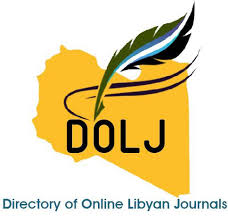Prevalence of Dental Caries among Private School Children in Benghazi, Libya (2023)
DOI:
https://doi.org/10.54361/LJMR.19.2.43Keywords:
Dental Caries, Prevalence, School Children, Benghazi, LibyaAbstract
Background: Oral diseases are among the most prevalent diseases globally and have serious health and economic burdens, greatly reducing quality of life for those affected. The most prevalent and consequential oral diseases are dental caries. Dental caries is considered a major public health problem in underdeveloped or developing countries. Therefore, the present study aimed at determining the prevalence of dental caries among school children.Material and Method: A cross-sectional survey was conducted in the city of Benghazi targeting children among seven private schools, both sexes, all ages, using a systematic sampling, a collection form containing information about socio-demographic characteristics of study participants was used and the children had examined for dental caries by the study investigators for the presence of dental caries depend WHO diagnostic criteria for caries.Result: A Total of 917 students included in this study were 56.5% of the student were male and 43.6% female; most of them were from the 5 - 10 age group with 63.6%, with a Mean = 9.95 ± 2.6 standard deviation. The prevalence of dental caries among school children was 43.9%. The dental caries prevalence was significantly associated with age and specific school; the study participants with higher prevalence in the age groups 5-10 years. There was no significant association between gender and dental caries. Conclusion: The study concluded that dental caries is common among school children, significantly varying by age and socioeconomic status. These findings highlight the urgent need for targeted prevention and intervention strategies to improve dental health and support overall well-being and academic success.
Downloads
References
1. WHO. Fact sheets: oral health: World Health Organization (https://www.who.int/news-room/fact-sheets/detail/oral health.
2. WHO. Sugars and dental caries. https://www.who.int/news-room/fact-sheets/detail/sugars-and-dental-caries.
3. Kazeminia M, Abdi A, Shohaimi S, Jalali R, Vaisi-Raygani A, Salari N, Mohammadi M. Dental caries in primary and permanent teeth in children's worldwide, 1995 to 2019: a systematic review and meta-analysis. Head Face Med. 2020; 16(1):22. doi: 10.1186/s13005-020-00237-z. PMID: 33023617; PMCID: PMC7541284.
4. Machiulskiene V, Campus G, Carvalho JC, et al. Terminology of dental caries and dental caries management: consensus report of a workshop organized by ORCA and Cariology Research Group of IADR. Caries Res. 2020; 54(1):7–14. doi: 10.1159/000503309.
5. Kale S, Kakodkar P, Shetiya S, Abdulkader R. Prevalence of dental caries among children aged 5-15 years from 9 countries in the Eastern Mediterranean Region: a meta-analysis. East Mediterr Health J. 2020; 26(6):726-735. doi: 10.6719/emhj.20.050. PMID: 32621509.
6. 6.Alraqiq H, Eddali A, Boufis R. Prevalence of dental caries and associated factors among school-aged children in Tripoli, Libya: a cross-sectional study. BMC Oral Health. 2021; 21(1):224. doi: 10.1186/s12903-021-01545-9.
7. Jullien S. Prophylaxis of caries with fluoride for children under five years. BMC Pediatr. 2021; 21(Suppl 1):351. doi: 10.1186/s12887-021-02702-3. PMID: 34496756; PMCID: PMC8424787.
8. WHO. Oral health Key facts. https://www.who.int/news-room/fact-sheets/detail/oral-health.
9. Karki S, Pakkila J, Laitala M-L, Humagain M, Anttonen V. Influence of dental caries on oral health–related quality of life, school absenteeism and school performance among Nepalese schoolchildren. Community Dent Oral Epidemiol. 2019; 47(6):461–469. doi: 10.1111/cdoe.12485.
10. Arheiam A. Early childhood caries in Libya. In: A compendium on oral health of children around the world: Early Childhood Caries. 1st edn. Edited by Folayan M. New York, USA: Nova Science. 2018; 243–48.
11. Al Sharbati, M.M., Meidan, T.M. & Sudani, O. Oral health practices and dental caries among Libyan pupils, Benghazi [1993-1994] . EMHJ - Eastern Mediterranean Health Journal. 2002; (5-6): 997-1004, 2000 https://iris.who.int/handle/10665/118958
12. Kumar, P G Naveen,; Peeran, Syed Wali; Abdalla, Khalid Awidat, al-Zain, Mona, alsaid, Fatma Mojtaba. Dental caries status among 6-14-year-old school-going children of Sebha City, Libya. Journal of Indian Association of Public Health Dentistry.. 2013: 11(1): 18-22.
13. .Ballo L, Arheiam A, Marhazlinda J. Determinants of caries experience and the impact on the OHRQOL of 6-year-old Libyan children: a cross-sectional survey. BMC Oral Health. 2021; 21(1):320. doi: 10.1186/s12903-021-01681-2.
14. Arheiam AA, Harris RV, Baker SR. Changes in dental caries and sugar intake before and during the conflict in Libya: A natural experiment. Community Dent Oral Epidemiol. 2020; 48(3):201–207. doi: 10.1111/cdoe.12526.
15. IBM Corp. IBM SPSS Statistics for Windows [Internet]. Armonk, NY: IBM Corp; 2020. Available from: https://www.ibm.com/analytics/spss-statistics-software
16. Chuyen NV, Du VV, Ba NV, Long DD and Son HA. The prevalence of dental caries and associated factors among secondary school children in rural highland Vietnam. BMC Oral Health. 2021; 21:349 https://doi.org/10.1186/s12903-021-01704-y
17. Mahanta SK, Prajapati D, Khadka A, Ghosh S, Shahi Thakuri S, Ghimire U, Khimbaja A. Prevalence of Dental Caries among School Going Children in Dolakha, Nepal. 2023; 19(3); 282-87
18. Bashirian S, Shirahmadi S, Seyedzadeh-Sabounchi S, Soltanian AR, Karimi-Shahanjarini A, Vahdatinia F. Association of caries experience and dental plaque with sociodemographic characteristics in elementary school-aged children: a cross-sectional study. BMC Oral Health. 2018; 18:7
19. Kabil NS, Eltawil S. Prioritizing the risk factors of severe early childhood caries. Dent J. 2017;5
20. Farsi DJ, Elkhodary HM. The prevalence of overweight/obesity in high school adolescents in Jeddah and the association of obesity association with dental caries. Ann Saudi Med. 2017; 37:114 21.
21. Huew R, Waterhouse PJ, Moynihan PJ and Maguire A. A. Prevalence and severity of dental caries in Libyan schoolchildren. International Dental Journal 2011; 61: 217–223
22. Adam TR, Al-Sharif AI, Tonouhewa A and AlKheraif A A. Prevalence of Caries among School Children in Saudi Arabia: A Meta-Analysis. Advances in Preventive Medicine. 2022: 8. https://doi.org/10.1155/2022/7132681
23. Elmaghrawy K, Mokahel L, Elgandouz N, et al. Prevalence of dental caries among children in Misurata, Libya: a cross-sectional study. Journal of Academic Research. 2024; 28(1).
24. Kabar A, Elzahaf R, Shakhatreh F. Prevalence and risk factors of dental caries among 6 to 12 years old children In Tripoli city, Libya. Scholars Journal of Dental Sciences. 2019; 6:223-233.
25. Almutairi B, Adam TR and Bustami R.Caries prevalence among children at public
26. and private primary schools in Riyadh: a retrospective study. BMC Oral Health. 2024; 24:809.
27. Rasul J, Pareek R, Singh G and et al Prevalence of Dental Caries in Private & Public School Children. European Journal of Molecular & Clinical Medicine.2021;8(2):ISSN 2515-8260
28. Ahmed W, Manzoor F, Khayyam U. Dental Caries Status among Public and Private School Children in Hyderabad District — Sindh. Pakistan Oral & Dental Journal. 2017; 37(2): 309-312.
29. Olatosi OO, Oyapero A, Onyejaka NK. Disparities in caries experience and socio-behavioural risk indicators among private school children in Lagos, Nigeria. Pesqui Bras Odontopediatria Clín Integr. 2020; 20:e0023. https://doi.org/10.1590/pboci.2020.102
30. Guedes IX, Forte FDS, Pereira VX, Nascimento MM, Laporta GZ. Caries prevalence and associated factors in children from public versus private schools: Cross-sectional study. Rev. Contexto & Saúde, 2024;24(48): e14841
31. Cheng YH, Liao Y, Chen DY, Wang Y and Wu Y. Prevalence of dental caries and its association with body mass index among school-age children in Shenzhen, China. BMC Oral Healt. 2019; 19:270
32. Abbass MMS, Mahmoud SA, El Moshy S et al. The prevalence of dental caries among Egyptian children and adolescences and its association with age, socioeconomic status, dietary habits and other risk factors. A cross-sectional study [version 1; referees: awaiting peer review] F1000Research 2019, 8:8.
33. Soltani MR, Sayadizadeh M, Raeisi Estabragh S, Ghannadan K, Malek-Mohammadi M. Dental Caries Status and its Related Factors in Iran: A Meta-Analysis. J Dent Shiraz Univ Med Sci. 2020; 21(3): 158-176
34. Yousaf M , Aslam T , Saeed S , Sarfraz A , Sarfraz Z and Ojeda IV. Individual, Family, and Socioeconomic Contributors to Dental Caries in Children from Low- and Middle-Income Countries.Int. J. Environ. Res. Public Health 2022, 19, 7114. https://doi.org/10.3390/ijerph19127114
Downloads
Published
Issue
Section
License
Copyright (c) 2025 Amina Muftah Elsaid, Nadia AM Eldarogi (Author)

This work is licensed under a Creative Commons Attribution-NonCommercial-NoDerivatives 4.0 International License.
Open Access Policy
Libyan journal of medical Research (LJMR).is an open journal, therefore there are no fees required for downloading any publication from the journal website by authors, readers, and institution.
The journal applies the license of CC BY (a Creative Commons Attribution 4.0 International license). This license allows authors to keep ownership f the copyright of their papers. But this license permits any user to download , print out, extract, reuse, archive, and distribute the article, so long as appropriate credit is given to the authors and the source of the work.
The license ensures that the article will be available as widely as possible and that the article can be included in any scientific archive.
Editorial Policy
The publication of an article in a peer reviewed journal is an essential model for Libyan journal of medical Research (LJMR). It is necessary to agree upon standards of expected ethical behavior for all parties involved in the act of publishing: the author, the journal editorial, the peer reviewer and the publisher.
Any manuscript or substantial parts of it, submitted to the journal must not be under consideration by any other journal. In general, the manuscript should not have already been published in any journal or other citable form, although it may have been deposited on a preprint server. Authors are required to ensure that no material submitted as part of a manuscript infringes existing copyrights, or the rights of a third party.
Authorship Policy
The manuscript authorship should be limited to those who have made a significant contribution and intellectual input to the research submitted to the journal, including design, performance, interpretation of the reported study, and writing the manuscript. All those who have made significant contributions should be listed as co-authors.
Others who have participated in certain substantive aspects of the manuscript but without intellectual input should only be recognized in the acknowledgements section of the manuscript. Also, one of the authors should be selected as the corresponding author to communicate with the journal and approve the final version of the manuscript for publication in the LJMR.
Peer-review Policy
- All the manuscripts submitted to LJMR will be subjected to the double-blinded peer-review process;
- The manuscript will be reviewed by two suitable experts in the respective subject area.
- Reports of all the reviewers will be considered while deciding on acceptance/revision or rejection of a manuscript.
- Editor-In-Chief will make the final decision, based on the reviewer’s comments.
- Editor-In-Chief can ask one or more advisory board members for their suggestions upon a manuscript, before making the final decision.
- Associate editor and review editors provide administrative support to maintain the integrity of the peer-review process.
- In case, authors challenge the editor’s negative decision with suitable arguments, the manuscript can be sent to one more reviewer and the final decision will be made based upon his recommendations.














